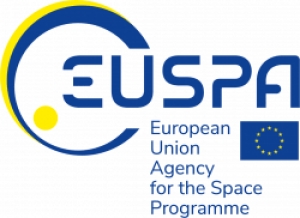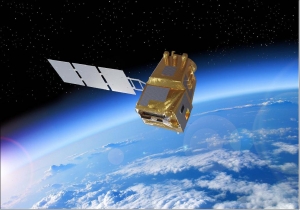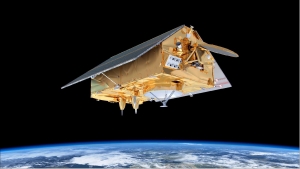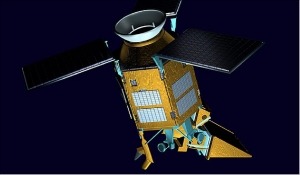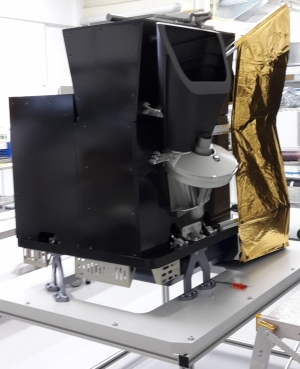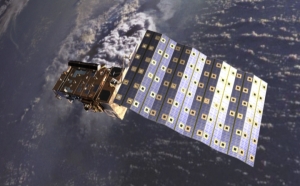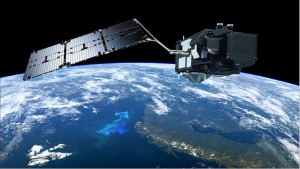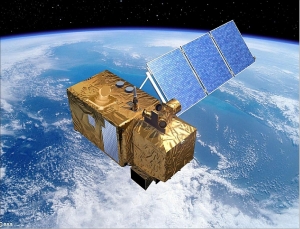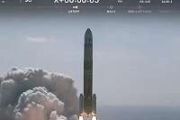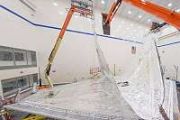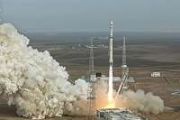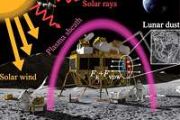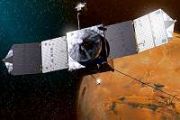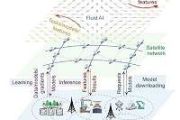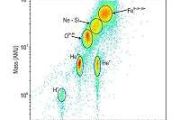Displaying items by tag: Copernicus
European Union Agency for the Space Programme (EUSPA)
EUSPA is the only European Union agency dedicated to space. Our unique mission is to serve as the essential link between space technology and user needs, translating the European Union’s investment in space into valuable, reliable services for European citizens.
EUSPA is responsible for operational management of the EGNOS and Galileo satellite navigation programmes and for ensuring the continuous provision of their services. This involves the management, operation, maintenance, continuous improvement, evolution and protection of the systems’ infrastructure, including upgrades and obsolescence management. The Agency is also responsible for developing future generations of the systems, the evolution of their services, and for activities related to th extension of their coverage.
Our responsibilities also include overseeing the operation of such key service facilities as the Galileo Security Monitoring Centre (GSMC) in France and in Spain, the European GNSS Service Centre (GSC) in Spain, the Galileo Reference Centre (GRC) in the Netherlands, the Galileo Control Centres (GCC) in Italy and Germany and the Galileo Integrated Logistic Support Centre (GILSC) in Belgium.
An important element of our work at EUSPA is to support the development of downstream and integrated applications based on Galileo, EGNOS and Copernicus, including through the Fundamental Elements funding mechanism and Horizon Europe. We also support the development of fundamental technological elements, such as Galileo-enabled chipsets and receivers, and provide the European Commission with expertise, including in preparing research priorities related to the downstream space market.
Another key part of our work is communications, market development and promotion of Galileo and EGNOS, and of the data, information and services offered by Copernicus, to promote user uptake of these data and services with a view to maximising their socio-economic benefits.
A core task for EUSPA is security of the EU Space Programme. This includes security accreditation of all components of the space programme, through the Security Accreditation Board. EUSPA is also responsible for the operational security of Galileo and EGNOS, which is provided through the Galileo Security Monitoring Centre, and for the provision and delivery of the Galileo Public Regulated Service for governmental users.
EUSPA has been entrusted with coordination of user-related aspects of the European Union Governmental Satellite Communications (GOVSATCOM), in close collaboration with Member States and other involved entities.
The EC may also entrust the Agency with tasks related to the Space Situational Awareness (SSA) programme, particularly regarding programme security and the delivery of Space Surveillance and Tracking (SST) services. In addition, the EC may entrust EUSPA with tasks related to the Quantum Communication Initiative (QCI) and the broader Secure Connectivity Initiative.
At the heart of our work at EUSPA are our efforts to support an innovative and competitive EU space sector, to ensure that space continues to drive innovation-based growth in Europe, delivering services and applications that meet the challenges that we face and supporting the implementation of priority EU policies.
LSTM Copernicus - Land Surface Temperature Monitoring mission
LSTM is a next generation ESA mission within the Copernicus program to complement Sentinel observation capabilities with high spatio-temporal resolution TIR (Thermal Infrared) observations over land and coastal regions in support of agriculture management services,and possibly a range of additional applications and services. The primary objective is to enable monitoring the evapotranspiration (ET) rate at European field scale by capturing the variability of Land Surface Temperature (LST) (and hence derived ET) allowing more robust estimates of field-scale water productivity.
Copernicus: Sentinel-6 - Michael Freilich Mission - formerly Jason-CS Mission
Jason-CS is the second component of the hybrid solution (Jason-3 + Jason-CS) agreed to in 2009. Jason-CS will ensure continuity with Jason-3 to guarantee adequate overlap with Jason-3. At least two satellites with a 7 years lifetime each (5 years + 2 years consumables) are planned to give time before new technologies such as swath interferometry (SWOT mission) can be considered as operational. 1) 2)
The Jason-CS satellite will carry a radar altimeter package to continue the high-precision, low-inclination altimetry missions of Jason-2 and -3. It will complement the high-inclination measurements on Sentinel-3 to obtain high-precision global sea-surface topography for the marine and climate user community.
Copernicus: Sentinel-5P - Precursor - Atmospheric Monitoring Mission
Sentinel-5P (or S-5P, or S5P) is an approved LEO pre-operational mission within the European GMES (Global Monitoring for Environment and Security) program — a collaborative effort of ESA and NSO (Netherlands Space Office). The goal is to fill the gap between the current atmospheric monitoring instruments SCIAMACHY on ESA's Envisat satellite and OMI (Ozone Monitoring Instrument) carried on NASA's Aura mission, as these instruments come to the end of their lifetimes, and the launch of the Sentinel-5 mission is planned for the timeframe 2020. Note: The Envisat mission operations ended on May 9, 2012. 1) 2) 3) 4)
Copernicus: Sentinel-4 - GEO Component Mission
The Sentinel-4 (S-4) mission within the context of Copernicus represents the geostationary component of European (EC, ESA) operational atmospheric composition monitoring missions.
In December 2007, the GMES Atmospheric Service Implementation Group of the EC (European Commission), issued its preliminary recommendations for the development of the GMES Space Segment operational capabilities in regard of atmospheric missions. In particular, it recommended implementing the Sentinel-4 mission as a UVN (UV/Visible/Near-infrared) sounder to be deployed on the two MTG Sounding (MTG-S) satellites. 1) 2) 3) 4) 5) 6)
|
Copernicus is the new name of the European Commission's Earth Observation Programme, previously known as GMES (Global Monitoring for Environment and Security). The new name was announced on December 11, 2012, by EC (European Commission) Vice-President Antonio Tajani during the Competitiveness Council. In the words of Antonio Tajani: "By changing the name from GMES to Copernicus, we are paying homage to a great European scientist and observer: Nicolaus Copernicus (1473-1543). As he was the catalyst in the 16th century to better understand our world, so the European Earth Observation Programme gives us a thorough understanding of our changing planet, enabling concrete actions to improve the quality of life of the citizens. Copernicus has now reached maturity as a programme and all its services will enter soon into the operational phase. Thanks to greater data availability user take-up will increase, thus contributing to that growth that we so dearly need today." |
Table 1: Copernicus is the new name of the former GMES program 7)
Copernicus: Sentinel-5 - Atmospheric Monitoring Mission in LEO
Sentinel-5P (or S-5P, or S5P) is an approved LEO pre-operational mission within the European GMES (Global Monitoring for Environment and Security) program — a collaborative effort of ESA and NSO (Netherlands Space Office). The goal is to fill the gap between the current atmospheric monitoring instruments SCIAMACHY on ESA's Envisat satellite and OMI (Ozone Monitoring Instrument) carried on NASA's Aura mission, as these instruments come to the end of their lifetimes, and the launch of the Sentinel-5 mission is planned for the timeframe 2020. Note: The Envisat mission operations ended on May 9, 2012. 1) 2) 3) 4)
Copernicus: Sentinel-3 - Global Sea/Land Monitoring Mission including Altimetry
The Sentinel-3 (S3) mission of ESA and the EC is one of the elements of the GMES (Global Monitoring for Environment and Security) program, which responds to the requirements for operational and near-real-time monitoring of ocean, land and ice surfaces over a period of 20 years. The topography element of this mission will serve primarily the marine operational users but will also allow the monitoring of sea ice and land ice, as well as inland water surfaces, using novel observation techniques.The Sentinel-3 mission is designed as a constellation of two identical polar orbiting satellites, separated by 180º, for the provision of long-term operational marine and land monitoring services. The operational character of this mission implies a high level of availability of the data products and fast delivery time, which have been important design drivers for the mission. 1) 2) 3) 4) 5) 6) 7) 8) 9) 10) 11) 12) 13) 14)
The Sentinel-3 program represents a series of operational spacecraft over the envisioned service period to guarantee access to an uninterrupted flow of robust global data products.
Copernicus: Sentinel-2 - The Optical Imaging Mission for Land Services
Sentinel-2 is a multispectral operational imaging mission within the GMES (Global Monitoring for Environment and Security) program, jointly implemented by the EC (European Commission) and ESA (European Space Agency) for global land observation (data on vegetation, soil and water cover for land, inland waterways and coastal areas, and also provide atmospheric absorption and distortion data corrections) at high resolution with high revisit capability to provide enhanced continuity of data so far provided by SPOT-5 and Landsat-7. 1) 2) 3) 4) 5) 6) 7) 8)
Telespazio Spa
Telespazio provides services that include the design and development of space systems, the management of launch services and in-orbit satellite control, Earth observation services, integrated communications, satellite navigation and localization and scientific programmes. The company manages space infrastructure, such as the Fucino Space Centre - and is involved in programmes including Galileo, EGNOS, Copernicus, COSMO-SkyMed, SICRAL and Göktürk.
Telespazio operates in France with Telespazio France; in Germany with Telespazio VEGA Deutschland GmbH, GAF and Spaceopal ; in the United Kingdom with Telespazio VEGA United Kingdom; in Spain with Telespazio Ibérica; in Hungary with Telespazio Hungary and in Romania with Rartel. Telespazio operates in South America through Telespazio Brasil and Telespazio Argentina. It operates in the USA through Telespazio North America. In Italy, the company is also present through e-GEOS.
Telespazio Spa is a European spaceflight services company founded in 1961. It is a joint venture owned by Leonardo (67%) and Thales Group (33%) headquartered in Rome.
Copernicus: Sentinel-1 - The SAR Imaging Constellation for Land and Ocean Services
Sentinel-1 is the European Radar Observatory, representing the first new space component of the GMES (Global Monitoring for Environment and Security) satellite family, designed and developed by ESA and funded by the EC (European Commission). The Kopernikus missions (Sentinel-1, -2, and -3) represent the EU contribution to GEOSS (Global Earth Observation System of Systems).

